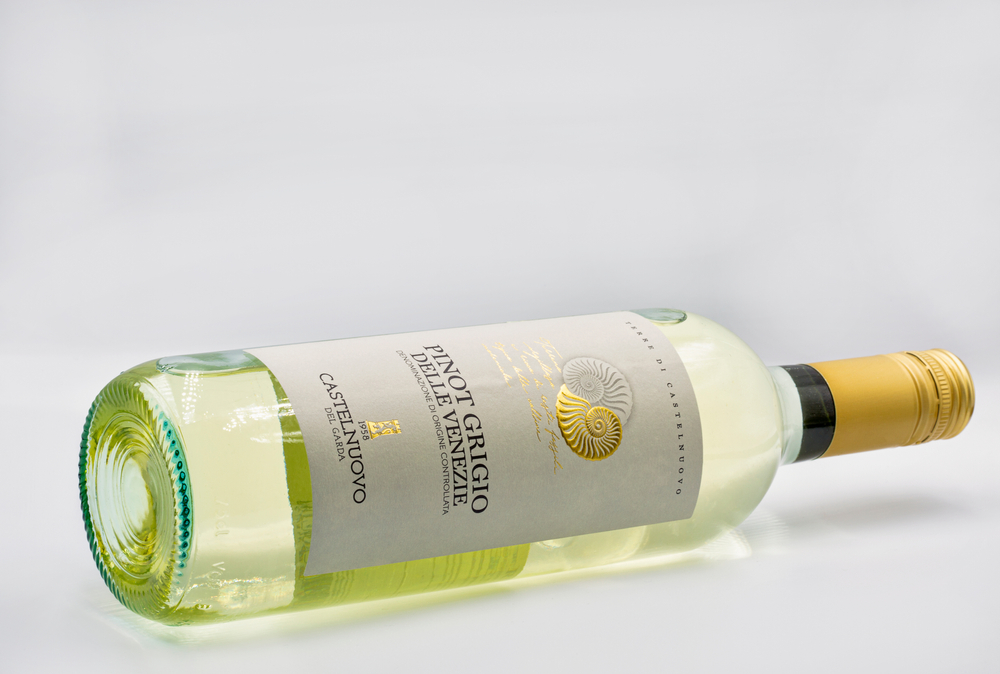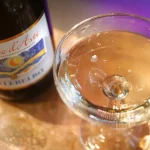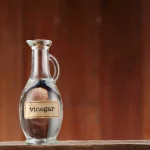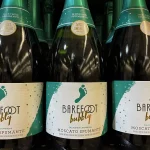Moscato and Moscato d’Asti may both be Italian wines, but there is actually a difference between the two!
The name Moscato, pronounced “moe-ska-toe” comes from Muscat, which is the family of grapes (and includes over 200 hundred varieties!) that help to produce both wines.
The name Moscato is actually the name for the Muscat Blanc grape in Italy. This family of grapes can produce yellow, pink, white and black grapes, dependent on where they are grown.
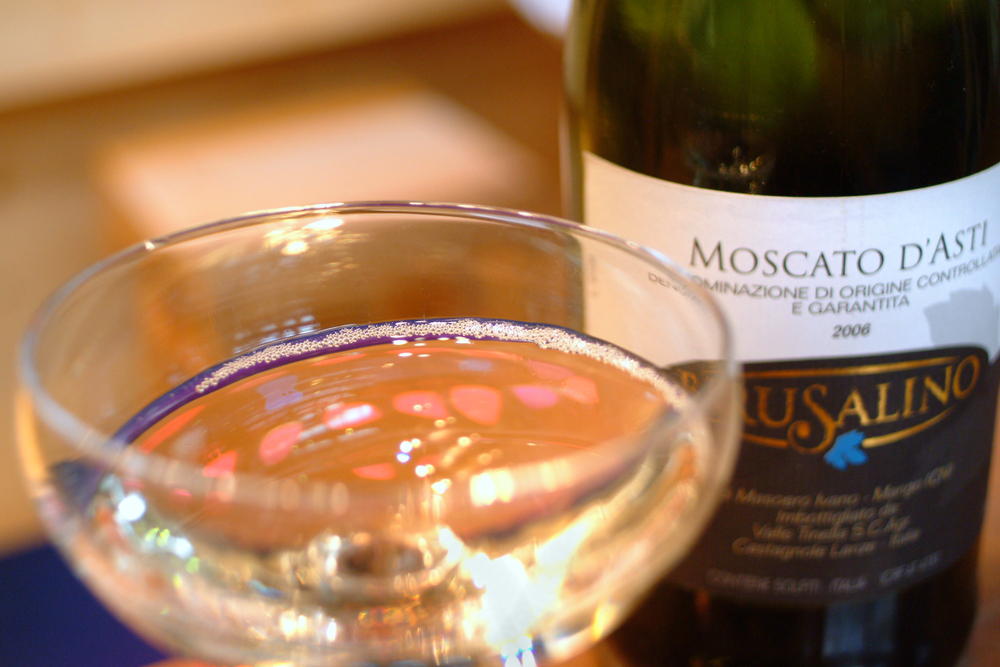
Muscat is enjoyed in a variety of ways, due to its versatility – it is used for the production of a fortified wine range in France, ‘vin doux naturels’, but it can be used to create both sweeter and dryer wines in many other regions.
There are wines made using Muscat grapes all over the world, in Italy, Austria, Greece, Australia, and Israel. This is due to how old the grape is, as it is thousands of years old, and has therefore been adopted by many countries for their wine production. If it works, it works, right?
Moscato
Moscato is a sweet Italian dessert wine with a low alcohol content. Moscato wines can be white, red or pink, due to the range of colors that the grape can grow in, along with fermentation methods.
When it is unfortified, the wine has a 7% alcohol content, and as a result, tends to be fruity and sweet in taste, exhibiting the ‘grapey’ aroma that is normally typical of these wines, alongside notes of citrus, peach and rose.
Fortified and aged versions of this wine tend to have a very dark color as a result of oxidation, whilst giving off aromas with notes of fruit cake, raisins, toffee and coffee.
This is a really sweet wine, so the wine goes well with spices like cardamom, ginger and chili – it is usually used as a pairing with spicy food and Oriental dishes. It also goes super well with lighter meats such as fish and chicken.
Despite this, its fruity taste and natural sweetness mean that this is often used as a dessert wine – a jack of all trades.
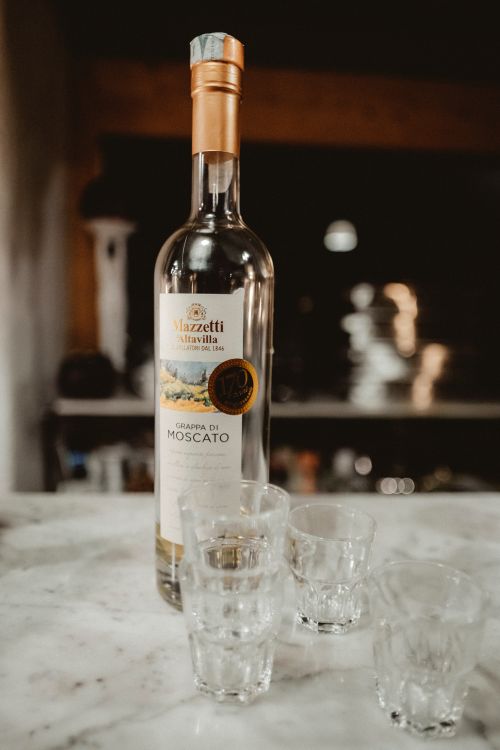
Moscato d’Asti
Moscato d’Asti is a typically sweeter relative of Moscato. It is often called ‘Asti’ by those that drink it, and is mainly produced in the province of Asti in Italy, as well as some smaller regions nearby.
It is often made in the Piedmont region by small wine producers and in small batches. Moscato d’Asti is made using a strain of grapes called ‘a petits grains’, a specific strain of Muscat Blanc grape.
This grape ripens early compared to other grapes, and it’s able to produce a wide range of different wines – wines from this grape can range from sparkling and sightly sweet to a dessert wine similar to honey.
Like its parent, Moscato, Moscato d’Asti can also be both sweet and dry, however, Moscato d’Asti’s low alcohol content (which can’t be any higher than 5.5% by law), means that it tends to be naturally sweet.
It is an extremely light wine, which means that it can be used as an accompaniment with meals at both lunch and dinner time – although it is more traditional to drink it before dessert.
Moscato d’Asti is seen as a very popular wine, and as a result, is drunk by many celebrities and has been for several years.
The weather in the region the wine grapes are growing can affect the taste, and so when the grape is grown in an area that is typically cooler than the main Muscat grape growing regions, the wine has a different taste – it can be lighter, sweeter and have more of a fizz.
As a result of both this and its affordable price (because it has a lower alcohol content than French champagne, it is cheaper), younger drinkers quite enjoy this wine.
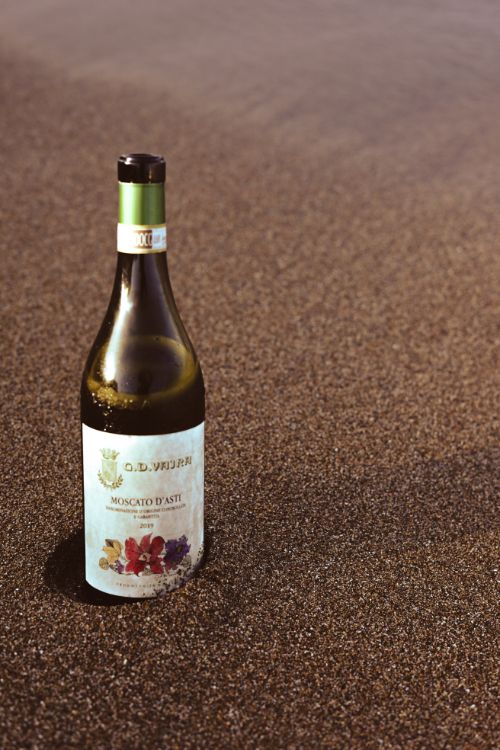
Other Grapes
Many grapes and the wines they produce can be mistaken for Muscat, whilst actually being unrelated to the Muscat family.
Wine grapes such as the grape ‘Morio Muskat’, which is German, sound very similar to ‘Muscat’, whilst this grape in particular is actually a cross between Pinot Blanc and Silvaner.
The grape ‘Muscadelle’, a Bordeaux wine grape, is often mistaken to be a Muscat variety due to its aromatic qualities, and the fact that it produces both dry and sweet wines.
The Loire wine, ‘Muscadet’, which is made from the ‘Melon de Bourgogne’ grape, and whilst being more neutral with the aromas it gives off, is often mistaken for Muscat.
As well as this other grapes such as Sauvignon Blanc, Chardonnay and Chasselas are often suffixed with the word ‘Musque’, which can further add to the confusion.
Now that we’ve discussed the differences and similarities between Moscat and Moscato d’Asti, you should hopefully be able to avoid some of these mistakes, whilst also being able to enjoy the wide range of delicious wines that the Muscat grape has to offer.
Thanks for reading!
- Shrimp Cocktail (and More) Wine Pairing Guide - 09/06/2022
- What Wine Serving Sizes Look Like: Standard Size and More - 08/06/2022
- How Much Sugar is in Wine: Glass and Bottle Sugar Content - 08/06/2022

